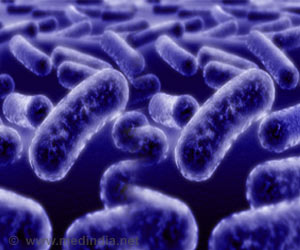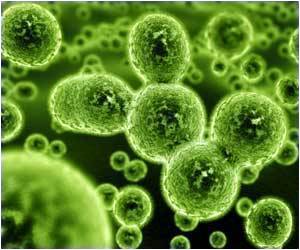- Microbial biofilm is a sticky substance formed by microorganisms to colonize body surfaces; it prevents antibiotic penetration and protects microbes from host immunity.
- New enzyme technique that prevents formation as well as destroys formed biofilm improves treatment efficacy by exposing the organisms to antibiotics and host defense.
What is Biofilm?
Microbial biofilm is a slimy sticky substance secreted by microorganisms such as bacteria and fungi to colonize and establish themselves on the surface of tissues, as well as on devices introduced into the body such as catheters, tubes, and implants such as heart valves, and artificial joints.
Obviously the biofilm acts both as a physical and chemical barrier and poses a major challenge for successful eradication of hospital acquired infections such as urinary tract infections, lung infections (pneumonia) and bloodstream infections.
Biofilm associated infections are associated with high rates of mortality and cause numerous deaths across North America each year.
How does the Microorganism Make the Biofilm?
The biofilm consists of a matrix of sugar molecules such as galactosaminogalactan and Pel
secreted by opportunistic pathogens such as Pseudomonas spp and Aspergillus spp which are associated with recurrent respiratory infections in persons with chronic lung diseases.
The microbes used certain enzymes (glycoside hydrolases) to cut the released sugar molecule in places and reattach it at some other site in an effort to remodel the sticky matrix.
Using The Microorganism’s Own Tool To Break Down The Biofilm
This study is the result of a four-year successful joint venture between Dr. Sheppard's team and scientists in the laboratory of Dr. P. Lynne Howell, senior scientist in the Molecular Medicine program at SickKids.
- Taking a cue from their observations, the team of scientists developed a technique to use the very same enzymes used by the bacteria to remodel the sugar armor, but to prevent formation and cause degradation of the biofilm and expose the organism to antibiotics and host defense in patients.
"We were able to use the microbe's own tools against them to attack and destroy the sugar molecules that hold the biofilm together," says the study's co-principal investigator, Dr. Don Sheppard, director of the Division of Infectious Diseases at the MUHC and scientist from the Infectious Diseases and Immunity in Global Health Program at the RI-MUHC.
- Another interesting observation was that the enzymes found in the bacteria were used against fungal biofilm, it successfully degraded the fungal biofilm as well, indicating cross-species activity.
- Earlier attempts in combating biofilms were only partially successful in that they prevented biofilm formation. The authors claim that their study is the first successful attempt at breaking down the formed biofilm which was verified in mouse models.
"We made these enzymes into a biofilm destroying machine that we can use outside the microbe where the sugar molecules are found," explains co-first study author Brendan Snarr, a PhD student in Dr. Sheppard's laboratory. "These enzymes chew away all of the sugar molecules in their path and don't stop until the matrix is destroyed."
Scope of The Study
The outcome of the study indicates that glycoside hydrolases enzymes can break down the sugar matrix of the biofilm of diverse microbes and could be used as possible therapeutic agents to increase antibiotic efficacy and to weaken the virulence of the organism.
Says Dr Sheppard, "Over 70 percent of hospital-acquired infections are actually associated with biofilms and we simply lack tools to treat them!"
In conclusion, this could indeed be a golden opportunity and the lead scientists hope to commercialize it in the not too distant future.
References:
- Microbial glycoside hydrolases as antibiofilm agents with cross-kingdom activity - (http://biorxiv.org/content/early/2017/03/04/113696)










